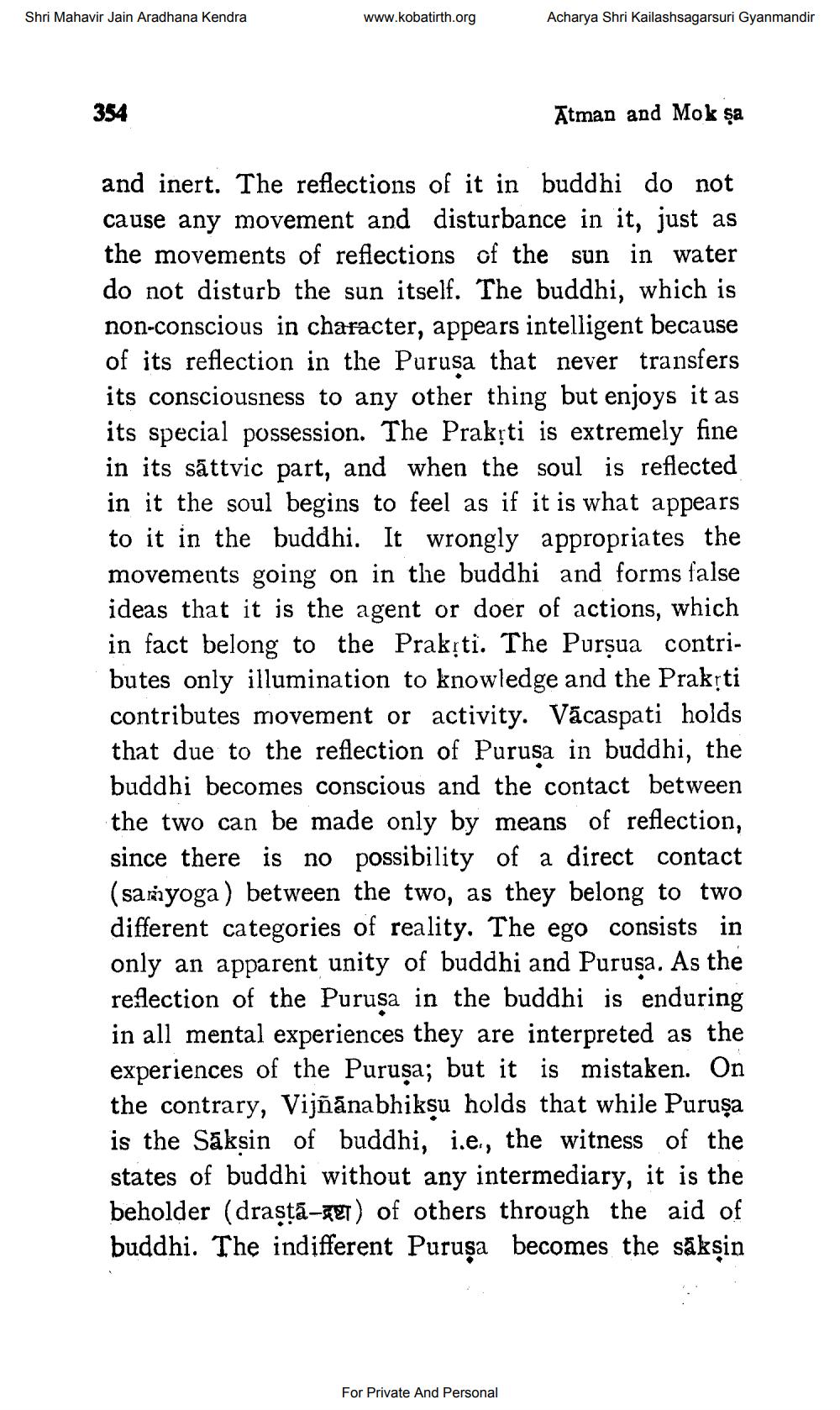________________
Shri Mahavir Jain Aradhana Kendra
www.kobatirth.org
Acharya Shri Kailashsagarsuri Gyanmandir
354
Atman and Mok sa
and inert. The reflections of it in buddhi do not cause any movement and disturbance in it, just as the movements of reflections of the sun in water do not disturb the sun itself. The buddhi, which is non-conscious in character, appears intelligent because of its reflection in the Purusa that never transfers its consciousness to any other thing but enjoys it as its special possession. The Prakrti is extremely fine in its sāttvic part, and when the soul is reflected in it the soul begins to feel as if it is what appears to it in the buddhi. It wrongly appropriates the movements going on in the buddhi and forms false ideas that it is the agent or doer of actions, which in fact belong to the Prakịti. The Purşua contributes only illumination to knowledge and the Prakrti contributes movement or activity. Vācaspati holds that due to the reflection of Purusa in buddhi, the buddhi becomes conscious and the contact between the two can be made only by means of reflection, since there is no possibility of a direct contact (saryoga) between the two, as they belong to two different categories of reality. The ego consists in only an apparent unity of buddhi and Purusa. As the reflection of the Purusa in the buddhi is enduring in all mental experiences they are interpreted as the experiences of the Puruşa; but it is mistaken. On the contrary, Vijñānabhiksu holds that while Puruşa is the Sāksin of buddhi, i.e., the witness of the states of buddhi without any intermediary, it is the beholder (drastā-Ger) of others through the aid of buddhi. The indifferent Puruşa becomes the sāksin
For Private And Personal




